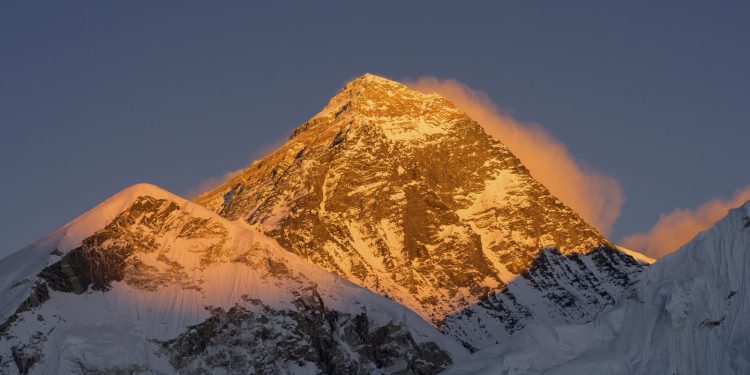Mount Everest, Earth’s highest mountain, is continuing to rise, and recent research has uncovered a fascinating reason behind this growth. Over thousands of years, the immense natural forces of erosion, combined with the merging of major rivers, have contributed to its upward surge. In a groundbreaking study, scientists have discovered that these rivers may have pushed Everest upwards by as much as 164 feet (50 meters) in the last 89,000 years. This intriguing process highlights the delicate balance of natural forces that shape the planet’s surface, even on such a monumental scale.
Everest’s Epic Height: A Growing Wonder
Standing at a towering 29,032 feet (8,848 meters), Mount Everest is the tallest mountain on Earth, known as Chomolungma in Tibetan and Sagarmāthā in Nepali. While Everest already surpasses its nearest Himalayan rivals by hundreds of feet, scientists have found that it’s still gaining height, thanks to forces beneath the Earth’s surface. But what exactly is causing this giant to rise even further?
The study, published in Nature Geoscience, reveals that Everest’s growth can be attributed to a phenomenon called isostatic rebound. This process occurs when the Earth’s crust loses mass—typically through erosion—and the underlying mantle exerts upward pressure, causing the land to rise. The key player here is the Arun River, which has gradually eroded the region’s rock and sediment, making room for Everest to inch upwards.
As the Arun River carved out deep gorges, billions of tons of soil and rock were washed away, reducing the weight on the Earth’s crust. This reduction allowed the crust to “float” upward due to the pressure from the molten mantle below. Although this is a slow process, moving just a few millimeters per year, it has caused a significant increase in Everest’s height over the millennia.
Merging Rivers, Rising Peaks
But Everest’s story doesn’t stop at erosion alone. Around 89,000 years ago, the Arun River merged with the larger Kosi River system, creating a unique hydrological network. This merger increased the erosive power of the rivers, causing even more sediment to be carried away. The additional erosion further accelerated the isostatic rebound, giving Everest and its neighboring peaks a boost.
“The interaction between river erosion and underground forces is lifting Mount Everest higher,” said Matthew Fox, a geochemist from University College London. “We’ve been able to measure this using GPS technology, and it’s fascinating to see such natural processes in action.”
Mount Everest isn’t the only peak affected by this uplift. The nearby mountains, Lhotse and Makalu—respectively the fourth and fifth highest mountains in the world—are also experiencing a similar growth due to the same geological forces. However, since Makalu is located closest to the Arun River, it’s rising slightly faster than the others, further showcasing the incredible influence of these rivers on the region.
A Dynamic Earth
This study sheds light on the complex forces that shape the world’s highest mountains, offering new insights into how rivers, erosion, and geological processes work together to sculpt the landscape. “Mount Everest’s changing height is a perfect reminder of how dynamic the Earth’s surface truly is,” said Xu Han, a geologist from China University of Geosciences. “As rivers continue to erode the land, the underlying forces of the Earth’s mantle push these peaks even higher.”
Through understanding these processes, scientists are now better equipped to explain the gradual but ongoing growth of Mount Everest and its neighboring mountains. And while Everest’s towering height may seem eternal, it’s actually a testament to the ever-changing nature of our planet.
As scientists continue to study the erosion patterns of the rivers surrounding Everest, they aim to further understand how these natural processes will continue shaping the region in the future. Could Everest grow even taller, surpassing its current height by hundreds of feet more? Only time—and continued observation—will tell.











